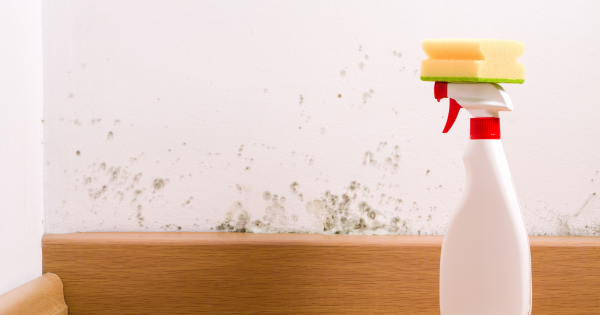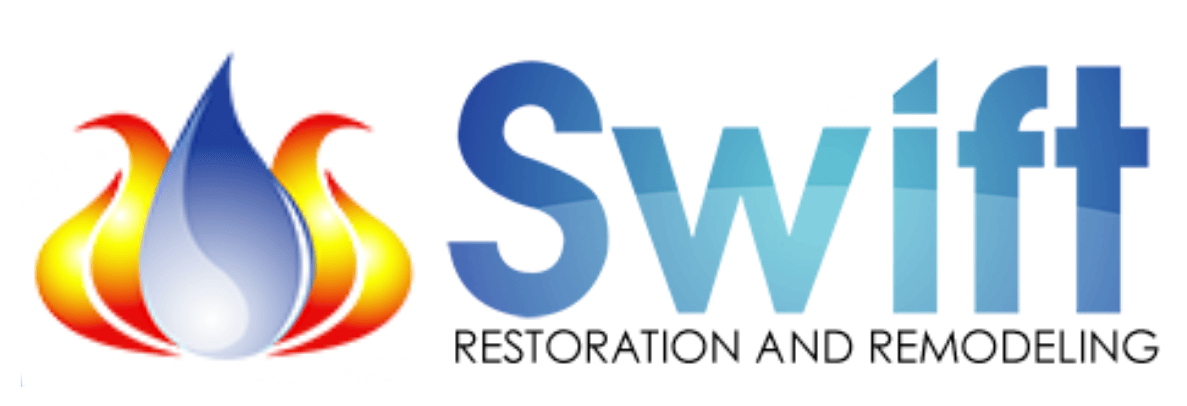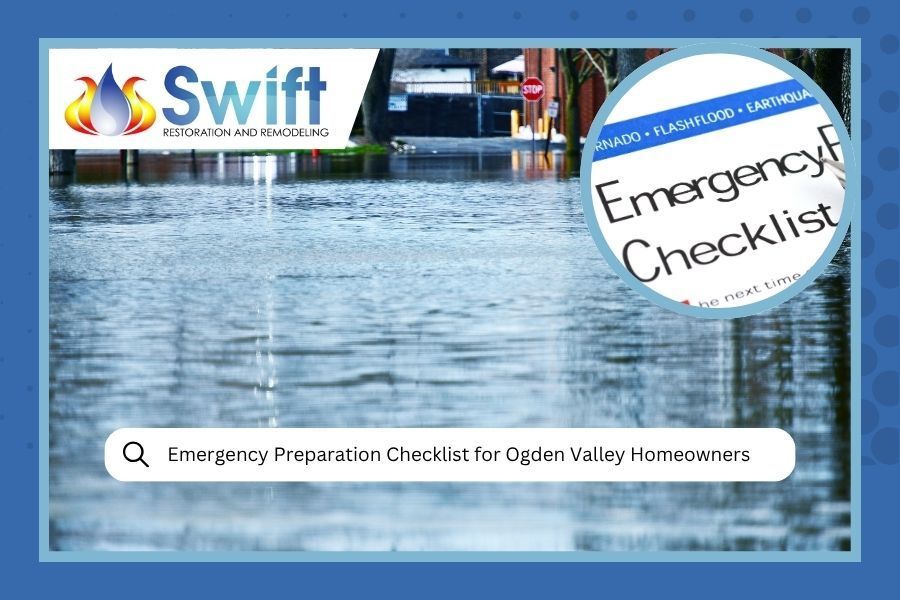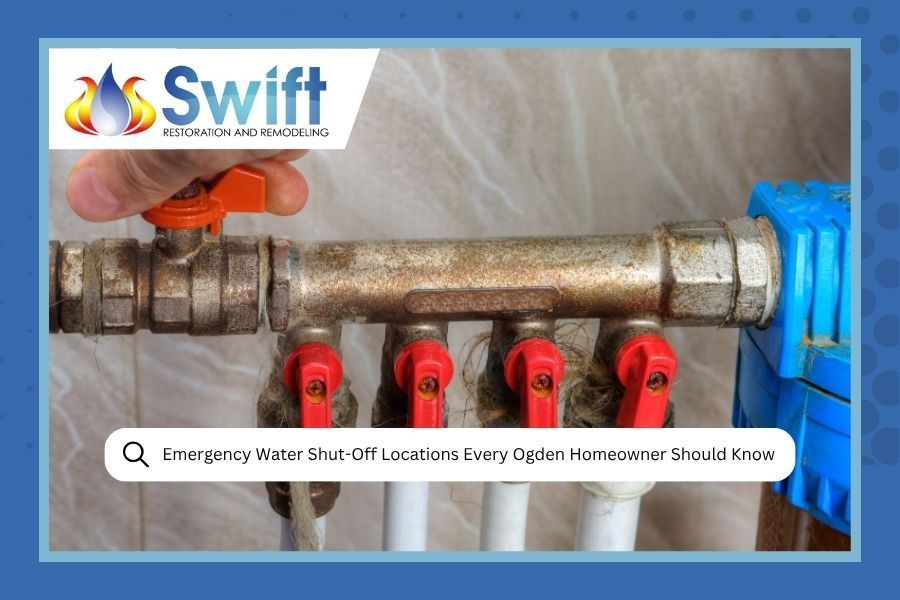
Author: Darin Jenks
Dealing with mold on drywall can be a common issue, especially in humid rooms. If you're facing this problem, you're not alone. In places like Ogden, Utah, where water damage restoration is crucial due to its specific climate, mold growth on drywall can become a persistent challenge. In this guide, we'll explore how mold appears on drywall, what it looks like, and most importantly, how to effectively get rid of it by yourself or with the help of companies specializing in water damage restoration Ogden UT.
How Does Mold Appear on Drywall
Mold is a type of fungus that thrives in damp and humid conditions. In Ogden, Utah, the risk of mold growth on drywall increases due to the unique weather patterns. When moisture levels are high, and there's poor ventilation, mold spores find an ideal environment to settle and multiply. Leaks, floods, or even high humidity can contribute to the development of mold on drywall.
What Does Mold on Drywall Look Like
Identifying mold on drywall is crucial for effective removal. Mold can take on various forms, often appearing as discolored patches. These patches can be green, black, brown, or even white. The texture may range from fuzzy to slimy. Musty odors are also common indicators of mold presence. If you notice any of these signs, it's time to address the issue quickly. But before you start removing mold on drywall, here are the details about each type of mold:
- Green Mold: Often found in areas with prolonged moisture exposure, green mold on drywall can be indicative of Aspergillus. It thrives in damp conditions and can be easily mistaken for other mold varieties.
- Black Mold: Stachybotrys chartarum, commonly known as black mold, is infamous for its dark, slimy appearance. This type of mold usually grows in areas with chronic water damage, such as leaky roofs or pipes. While not all black molds are toxic, it's essential to address them quickly.
- White Mold: White mold on drywall may be Cladosporium, a common mold species. Although it appears less threatening than its darker counterparts, patches of white mold cause health problems and must be treated seriously.
- Brown Mold: Alternaria, often presenting as brown or tan spots on drywall, is another common mold type. It is commonly associated with water damage and can cause respiratory issues in sensitive individuals.
Regardless of the color, any mold on drywall is a cause for concern. Identifying the specific type may require professional inspection, as there are different types of mold that can develop, each with varying levels of risk. Immediate action should be taken at the first signs of mold growth to prevent further damage and potential health risks.
How to Kill Mold on Drywall: Steps
Now that you know what this enemy looks like, you might be wondering How do I kill mold on drywall? Whether you're opting for a do-it-yourself approach or considering the expertise of companies specializing in water damage restoration in Ogden, UT, these practical steps aim to guide you through the process of mold remediation. They ensure a thorough and efficient resolution to this common household problem.
1- Safety First: Before starting the mold removal process, prioritize safety. Wear protective gear such as gloves, a mask, and safety glasses to prevent exposure to mold spores.
2- Isolate the Area: Seal off the affected area to prevent mold spores from spreading to other parts of your home. Use plastic sheets and duct tape to create a barrier.
3- Ventilate the Space: Ensure proper ventilation by opening windows and using fans. This helps reduce humidity levels and aids in the drying process.
4- Remove Damaged Drywall: If the mold has penetrated the drywall extensively, it may be necessary to remove and replace the affected sections. Cut out the damaged drywall using a utility knife and dispose of it properly.
5- Scrub with Mold Cleaner: Mix a solution of water and mold cleaner or a mixture of white vinegar and water. Scrub the affected areas using a scrub brush or sponge. Be thorough in your approach to ensure all visible mold is removed.
6- Kill the Mold: Use some of these three solutions.
- Concrobium Mold Control: Consider using a product like Concrobium Mold Control. This EPA-registered solution not only eliminates existing mold but also helps prevent its return. Easy to apply, this product is ideal for smaller-scale mold issues and offers peace of mind with its environmentally friendly composition. Apply the product according to the manufacturer's instructions, allowing it to dry thoroughly.
- 2:1:1 ratio of baking soda, white vinegar, and water: Create a natural mold-killing solution by mixing baking soda, white vinegar, and water in a 2:1:1 ratio. While suitable for smaller mold problems, it may be less effective for extensive mold infestations, requiring additional care and attention. This eco-friendly alternative can be applied with a sponge or spray bottle. Let it sit for some time before scrubbing and rinsing.
- 3% hydrogen peroxide: Another effective mold-killing option is a 3% hydrogen peroxide solution. Although it is simple to use, caution is advised to avoid potential discoloration on certain surfaces, and it is best suited for targeted application on smaller mold-affected regions. Apply it directly to the mold-affected areas and let it sit for 10-15 minutes before scrubbing and wiping clean.
7- Dry Thoroughly: After cleaning, allow the area to dry completely. Dehumidifiers and fans can speed up the drying process and prevent future mold growth.
8- Prevent Future Mold: Identify and address the root cause of the moisture issue. Fix leaks, improve ventilation, and consider using mold-resistant drywall in humid areas.
Remember, if the mold problem is extensive or if you have health concerns, it's advisable to seek professional help from a full-service damage restoration contractor.
Call Swift Restoration and Remodeling at (385) 402-8571 and Our Team of Experts Will Help You
Dealing with mold on drywall is a task that requires patience and thoroughness. By following these steps, you can effectively eliminate mold growth and prevent its return. Keep in mind the importance of addressing water damage quickly to avoid potential health problems associated with mold. If you're uncertain or facing a severe mold issue, don't hesitate to consult with a professional water damage restoration service in Ogden, Utah, for comprehensive assistance. At
Swift Restoration and Remodeling, we pride ourselves on 30 years of expertise with restoration services as our primary focus!








